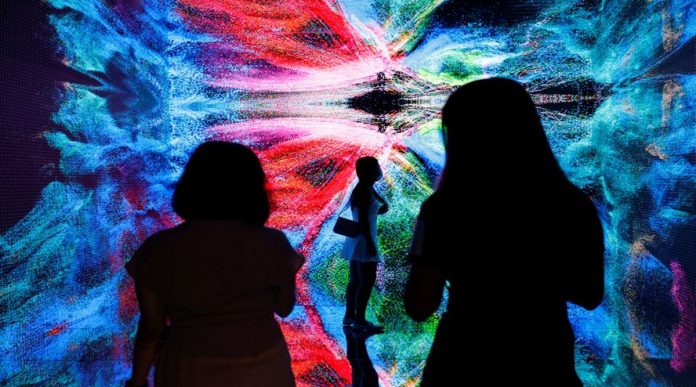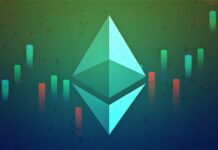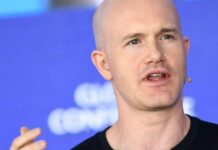By Siddharth Pai
The term Non-Fungible Tokens (NFT’s) has been all the rage for some time now. As with most things that are technology-oriented, many people bandy about new terms without having a functional understanding of how the technology works or what it is designed to do. Most people do not display their ignorance for fear of being ridiculed. Worse, they develop a faulty understanding of the new acronym just so that they can blithely use it at a cocktail party or at the workplace. And since most of their coworkers are also foggy in their understanding, the chances of being caught out are slim.
I have seen this phenomenon occur often with new technology concepts. I have worked with people who throw out terms like “neural networks” or “Web 3.0” during a work-related conversation without the faintest idea of what these terms mean. If they are in a senior position, they often get away with it. The courage to say “I don’t know” is the preserve of the few.
We have been bombarded with news this week on Elon Musk’s purchase of Twitter. Musk is a self-proclaimed “free speech absolutist”. In a press release on Monday, April 25, 2022 announcing the deal, he said “free speech is the bedrock of a functioning democracy”. He claims he is going to work with users and management to “unlock” Twitter’s “substantial” value. Meanwhile, there has been little press on the fact that Musk is having production issues at Tesla, but that’s a topic for another day.
Before the takeover, Jack Dorsey, the founder and ex-CEO of Twitter, sold his first tweet (also the very first tweet ever) as an NFT for more than $2.9 million. Meanwhile, creators of the Bored Ape Yacht Club have created an NFT collection of cartoon pictures of apes depicted in various states of ennui. A particularly popular digital artist, Mike Winkelmann, (known online as Beeple) sold a single painting as an NFT for almost $70 million.
So, what exactly are NFTs?
While most of the noise around NFTs is to do with the sale of artwork, NFTs can be anything digital. Jack Dorsey’s tweet, for example, is not art. “Non-fungible” simply means that the item cannot be replaced by anything else—it is unique. In contrast, money is fungible. If I give you a `500 note, you can exchange it like for like with me with another `500 note. The same with crypto currencies—one Bitcoin is the same as another. Money is not inexhaustible either—`500 earmarked for a road project in your factory can be easily diverted to work on the factory gate or, illegally, into the procurement director’s pocket. Once diverted, the `500 is exhausted.
Unlike money, a painting or a song or other piece of work is not fungible. You cannot exchange any of the Ravi Varma paintings that hang in Baroda with the ones that hang in Mysore as if there was no difference between them. Woman and Imagine by John Lennon are not interchangeable songs. They are non-fungible. Moreover, their provenance is known. We know that Ravi Varma was commissioned by T Madhavrao, regent of Baroda, to paint the portrait of the young maharaja Sayajirao Gaekwad III. Once there, he received many assignments from the Gaekwads, all of which are fully recorded, thereby establishing their provenance. These records prove beyond doubt that the works hanging in the Lakshmi Vilas Palace are indeed those of the master.
However, the advent of computers and the digital age means that any number of copies of music or songs can be made in MP3 or other formats, and any number of high-quality digital art or photographs can be copied with no loss of fidelity from the original. Court cases and government actions over Napster Inc.’s software which allowed peer to peer sharing of song files forced that company to shut down in 2001 after a clumsy system of ‘digital rights management’ under the US Digital Millennium Copyright Act was enforced. Current law is still clumsy when it comes to copying and sharing digital content. Essentially, unlike money and physical art, these digital art forms are not inexhaustible, and each copy is exactly like the original.
Enter the NFT. By using blockchain technology, NFTs create a digital non-fungible ‘token’ for each original piece of digital art or creative work (such as a photograph, a cartoon, a song, or a poem) which is now forever the only original there is. All the others are only copies of that original. For now, most of these non-fungible tokens are on the Ethereum blockchain.
A blockchain allows for the recognition of an initially defined inviolable ‘block’ (which can be composed of anything–cryptocurrencies, tokens, export/import letters of credit, and so on) and then allows for the passing of this inviolable first block to several hands which form the ‘chain’. So, a non-fungible token is simply a block on a blockchain that stores additional computerised information about the block which makes the initial token (block) unique.
NFTs capitalise on an insight into human nature—the need to ‘own’ things and the bragging rights that come with it. Jack Dorsey’s tweet has been freely available on the internet, even to those without a Twitter account. However, his tweet is now ‘owned’ by somebody. The NFT simply certifies with computer code that the tweet is owned by a certain entity/individual. Apart from the bragging rights, the ability to sell the ownership of the original presumably
goes up as its popularity increases across the internet. For a speculator, NFTs work like ownership of any rare creative work such as a Ravi Varma original.
It will take some time for NFTs to become mainstream. In the meantime, if you want to speculate on creative digital work, whether visual or otherwise, buy a few!
The writer is a technology consultant and venture capitalist. By invitation.
Credit: Source link






















 Bitcoin
Bitcoin  Ethereum
Ethereum  Tether
Tether  Solana
Solana  USDC
USDC  XRP
XRP  Lido Staked Ether
Lido Staked Ether  Dogecoin
Dogecoin  Toncoin
Toncoin  Cardano
Cardano  Shiba Inu
Shiba Inu  Avalanche
Avalanche  TRON
TRON  Polkadot
Polkadot  Wrapped Bitcoin
Wrapped Bitcoin  Bitcoin Cash
Bitcoin Cash  Chainlink
Chainlink  Polygon
Polygon  NEAR Protocol
NEAR Protocol  Internet Computer
Internet Computer  Litecoin
Litecoin  LEO Token
LEO Token  Uniswap
Uniswap  Dai
Dai  First Digital USD
First Digital USD  Ethereum Classic
Ethereum Classic  Aptos
Aptos  Hedera
Hedera  Cosmos Hub
Cosmos Hub  Cronos
Cronos  Filecoin
Filecoin  Stellar
Stellar  Mantle
Mantle  Stacks
Stacks  Pepe
Pepe  Immutable
Immutable  XT.com
XT.com  Render
Render  OKB
OKB  Renzo Restaked ETH
Renzo Restaked ETH  Optimism
Optimism  Arbitrum
Arbitrum  dogwifhat
dogwifhat  Sui
Sui  Bittensor
Bittensor  Wrapped eETH
Wrapped eETH  Maker
Maker 
